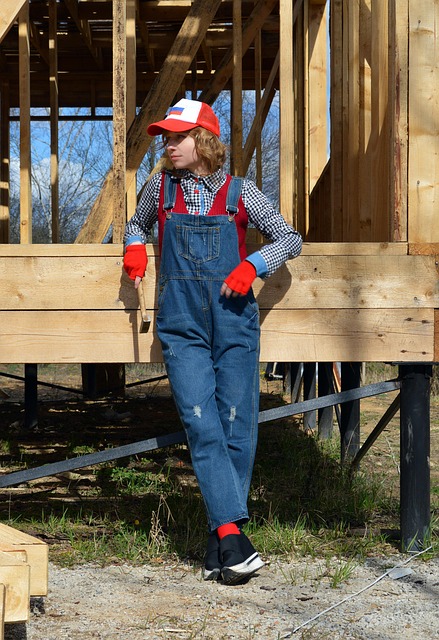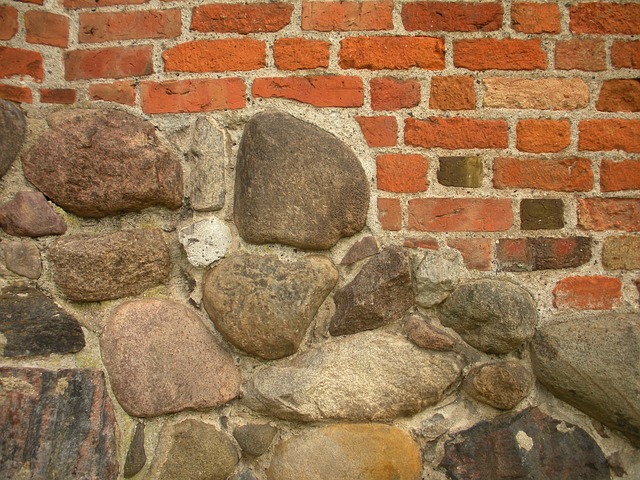Pier and beam foundations, common in older homes, face challenges from soil conditions, settling, shifting, and age. Regular inspection is crucial to identify issues early, with advanced repair techniques like pier leveling and waterproofing offering lasting solutions. Key focus areas include cracked walls, uneven floors, and door misalignment. Waterproofing, especially in humid regions, blocks water intrusion, preventing structural damage and extending foundation lifespan. Signs of water damage like mold, mildew, or warped floorboards require immediate attention during regular inspections to ensure structural integrity and property value preservation through proper Pier and Beam Foundation Repair.
“Pier and beam foundations, a common structural support system, require meticulous upkeep, especially when it comes to waterproofing. This comprehensive guide delves into the intricacies of pier foundation care, addressing key concerns like common issues, water intrusion signs, and effective waterproofing techniques. Learn why waterproofing is paramount for these structures and discover maintenance tips to prolong their lifespan. Moreover, understand when Pier and Beam Foundation Repair becomes essential, ensuring informed decisions for your home’s longevity.”
Understanding Pier and Beam Foundations: The Basics

Pier and beam foundations, a common structural system in many older homes, consist of vertical support piers connected by horizontal beams. This design distributes weight efficiently, making it suitable for areas with varying soil conditions. However, over time, these foundations can develop issues that require pier and beam foundation repair. Settling or shifting soils, changes in moisture levels, and age can all contribute to structural damage, such as cracked walls, uneven floors, and door misalignment.
Regular inspection is key to identifying potential problems early on. If signs of distress are noticed, professional evaluation is essential. Modern repair methods involve advanced techniques like pier leveling, which adjusts the piers to stabilize the entire structure. Beam replacement or jacking may also be necessary to restore structural integrity. Using innovative materials and precise engineering ensures a lasting solution for these foundations, providing homeowners with peace of mind and preserving their properties’ value.
Common Issues with Pier and Beam Foundations

Pier and beam foundations, while commonly used in many construction projects, are susceptible to various issues over time. One of the primary concerns is water intrusion, which can lead to significant structural damage. The intricate nature of these foundations, with their network of piers supporting beams, creates potential entry points for moisture, especially around joints and cracks. This is a critical issue as water can weaken the foundation, causing bowing or settling of the structure.
Another common problem is soil movement, particularly in areas with expansive clay soils. The expansion and contraction of these soils can put immense pressure on the pier and beam system, leading to misalignment and structural stress. Over time, this can result in uneven floors, doors that stick, or even cracks in walls, requiring urgent Pier and Beam Foundation Repair measures.
The Importance of Waterproofing for Pier Foundations

Waterproofing is an essential aspect of maintaining a pier and beam foundation, especially in regions prone to high moisture levels or frequent rainfall. The primary purpose of waterproofing is to protect the structural integrity of the foundation by preventing water intrusion. When water seeps into cracks or gaps in the pier foundation, it can lead to wood rot, corrosion of steel components, and even settlement or shifting of the structure over time.
By implementing effective waterproofing measures, homeowners and builders can significantly extend the lifespan of pier and beam foundations. This includes using high-quality waterproof membranes, sealing all openings and cracks, and ensuring proper drainage around the foundation. Such proactive steps not only save on costly repair bills but also ensure the safety and stability of these structures, which are often integral to historic or traditional homes.
Identifying Signs of Water Intrusion in Pier Foundations

Water intrusion in pier and beam foundations can go unnoticed for extended periods, often leading to significant structural damage if left unaddressed. Homeowners should be vigilant for several signs indicating potential water penetration. One of the most visible indicators is the formation of mold or mildew on walls, ceilings, or in attics, as these areas are common entry points for moisture. Peeling paint, especially in older homes, can also signal water damage, as water seepage often leads to flaking and blistering.
Other subtle signs include warped or bloated floorboards, sticky doors or windows, and musty odors. In some cases, you might notice discolored or dried-up wood, which could be a result of prolonged moisture exposure. Regular inspections are key to early detection; promptly addressing water intrusion issues is essential for effective pier foundation waterproofing and preventing costly repairs related to structural damage.
Waterproofing Techniques for Effective Protection

Waterproofing is an essential aspect of maintaining a pier and beam foundation, ensuring longevity and protection against the elements. There are several techniques to achieve effective waterproofing, each offering unique advantages for specific needs. One common method involves applying a waterproof membrane to the foundation walls, creating a barrier that prevents water seepage. This is particularly useful in areas prone to heavy rainfall or near bodies of water. The membrane is typically made from high-quality materials and installed by professionals, ensuring long-lasting protection.
Another approach focuses on sealing cracks and gaps around the foundation. By using advanced sealants and caulks, these openings are closed off, blocking potential entry points for moisture. This technique is ideal for addressing existing issues or maintaining a newly waterproofed foundation. Regular inspection and maintenance of these seals are crucial to guarantee their effectiveness over time, thus providing an extra layer of protection for pier and beam structures.
Maintenance Tips to Extend the Lifespan of Your Pier Foundation

Regular maintenance is key to extending the lifespan of your pier and beam foundation. One crucial step is inspecting the structure for any signs of damage, rot, or settling at least once a year. Addressing issues early can prevent minor problems from turning into major repairs, saving you significant costs in the long run.
Simple upkeep tasks include cleaning debris from drains to ensure proper water flow and checking the condition of caulk around piers and beams. Reapplying sealant every few years helps protect against moisture intrusion, a leading cause of foundation damage. Remember, keeping your pier and beam foundation dry is essential for its longevity, so stay vigilant and prioritize these maintenance tips.
When to Consider Pier and Beam Foundation Repair

If your home is built on a pier and beam foundation, it’s crucial to be aware of potential issues that may require Pier and Beam Foundation Repair. While these foundations are known for their stability and adaptability, especially in areas prone to flooding or high water tables, they can still suffer damage over time. Signs like uneven floors, sticky doors or windows, or visible cracks in the foundation walls are red flags.
Consider Pier and Beam Foundation Repair if you notice any signs of settlement or damage. Prompt action is essential as these issues can escalate, leading to more costly repairs or even structural instability. Regular inspections by a professional can help identify problems early on, ensuring that any necessary repairs are made efficiently and effectively.
